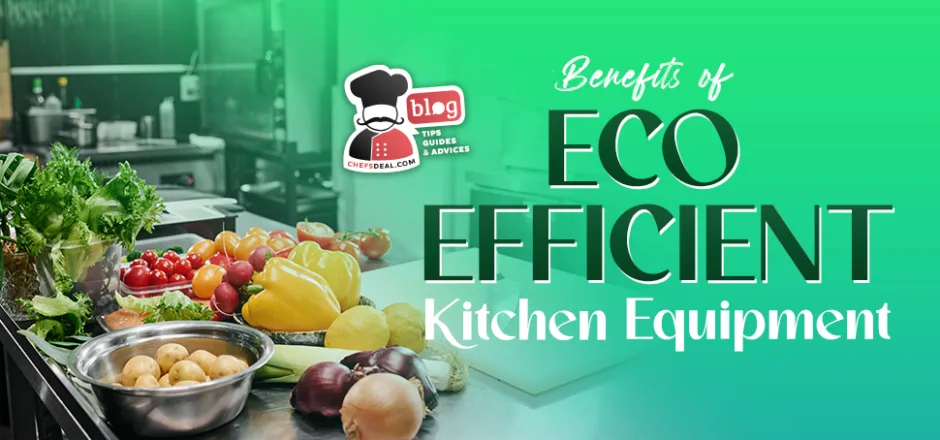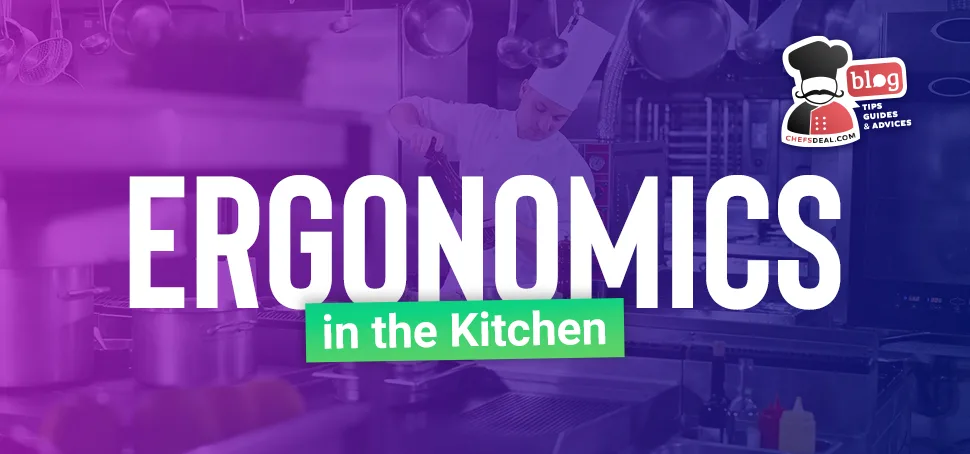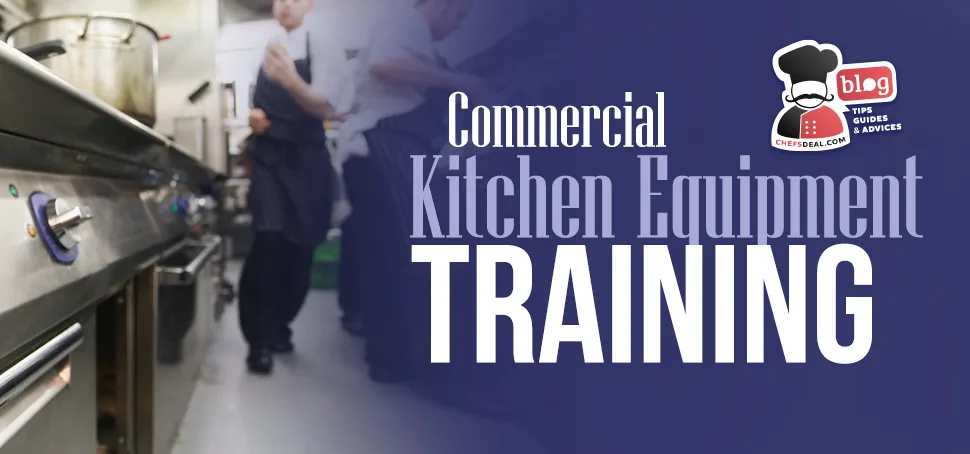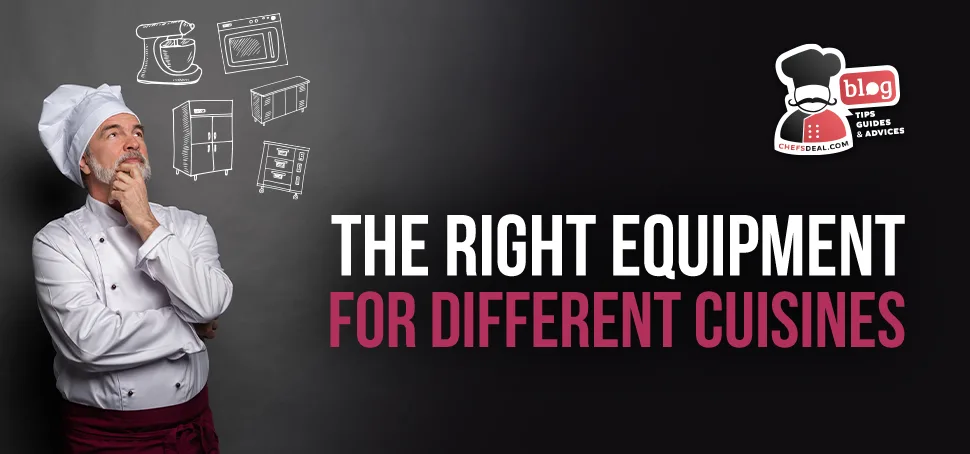Eco-efficient kitchen equipment refers to appliances and tools designed to minimize their negative impact on the environment while maintaining operational efficiency. They have smart features that monitor and optimize energy and water usage. Commercial kitchens are replete with energy-intensive appliances that contribute to the depletion of natural resources. With each recipe prepared and meal served, fryers, ovens, dishwashers, and other machines consume water, electricity, and gas, generating greenhouse gases.
According to ENERGY STAR, a governmental program that promotes energy efficiency and environmental sustainability, food and beverage outlets consume approximately 5 to 7 times more energy per square foot than other commercial facilities. The difference goes up to 10 times in restaurants with high customer turnover. The distribution of average consumption rates in a full-service restaurant to different kitchen tasks is:
- Food prep & cooking 35%
- HVAC systems 28%
- Sanitation equipment 18%
- Lighting 13%
- Refrigeration 6%
Therefore, sustainability in foodservice is a preference to attract environmentally-conscious customers and an imperative responsibility to create a livable and lovable future. The visible effects of climate change and increased carbon footprint have made sustainability a symphony of voices in the foodservice industry. In this grand symphony, eco-efficient kitchen equipment and its advanced technologies emerge as a harmonious melody, orchestrating a greener future for food service operations. Chef’s Deal, your sustainable and supportive equipment supplier, taps into the 4 benefits of buying eco-efficient kitchen equipment to inspire you toward sustainability.
The Benefits Of Eco-Efficient Kitchen Appliances
Eco-efficient kitchen appliances offer a transformative approach to modern culinary practices, blending environmental stewardship with operational excellence. Embracing these advanced technologies paves the way for significant energy and water savings and ensures the durability and longevity of kitchen equipment.
From ENERGY STAR-rated devices that reduce utility costs to water-conserving innovations that address the foodservice industry’s substantial resource usage, eco-efficient appliances are at the forefront of sustainable kitchen management. Additionally, these innovations contribute to waste reduction, turning the tide on food waste and its environmental impact. The four benefits of integrating eco-efficient kitchen appliances into your operations underscore its pivotal role in building a more sustainable, cost-effective, and efficient culinary environment.
1. Save Energy
Saving energy is one of the key benefits of eco-efficient kitchen equipment. Every flicker of a flame or hum of a refrigerator adds to power consumption. So, each watt saved is a step closer to a greener, more economically viable kitchen. The easiest way to ensure energy-saving equipment is to purchase ENERGY STAR-rated appliances. These green kitchen champions are built to meet strict energy efficiency guidelines set by the Environmental Protection Agency (EPA) and the Department of Energy (DOE).
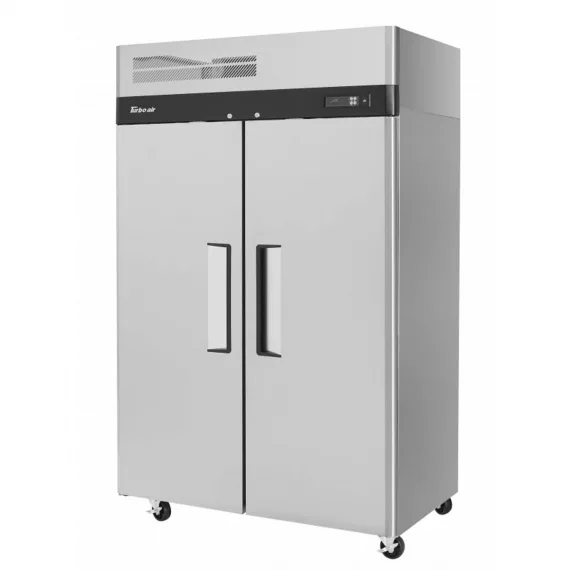
ENERGY STAR-certified appliances significantly impact sustainability in food service. The advanced technologies, such as improved insulation, LED lighting, and efficient heat transfer mechanisms, integrated into these appliances help provide maximum performance using minimum energy. These features limit energy waste, conserve valuable resources, and reduce greenhouse gas emissions. EPA estimates that ENERGY STAR-rated equipment saves businesses roughly 340 billion kWh annually. ENERGY STAR kitchen tools are also more durable, so they reduce the environmental impact associated with frequent replacements.
Energy-efficient kitchen equipment correlates with long-term cost savings by reducing utility bills. For instance, energy-efficient dishwashers consume less water, and induction cooktops use energy only when necessary. Upgrading your high energy-intensive appliances to energy-efficient versions amounts to 70% reduced energy costs. ENERGY STAR compared the load of standard appliances on utility bills with that of eco-efficient equipment. The lifetime cost savings that energy-efficient versions promise are striking.
| Equipment | Saving |
| Dishwashers | $18,000 – $73,000 |
| Hot Food Holding Cabinets | $3,220 |
| Ovens | $2,100 – $7,200 |
| Fryers | $1,800 – $4,400 |
| Griddles | $900 – $1,330 |
| Ice Makers | $610 – $1,200 |
| Refrigerators & Freezers | $520 – $910 |
| Coffee Brewers | $215 |
2. Conserve Water
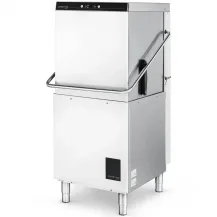
Eco-efficient kitchen equipment is pivotal in conserving water. Water is an essential ingredient in commercial kitchens and the primary source of survival, so water conservation is crucial for the sustainability of our planet. The food service industry accounts for 15% of total water use in the US, according to the EPA data. This amounts to roughly 1.3 billion gal (4.92 billion l) of water daily, enough to fill over 500 Olympic-sized swimming pools.
Dishwashers and steam cookers are the biggest water consumers, responsible for 50% and 20% of total consumption, respectively. Therefore, upgrading these machines to eco-efficient versions is a great stride in water conservation. Advancements in water-saving dishwashers help reduce water consumption considerably. Eco-efficient models use less water per cycle through more efficient spray nozzles that use targeted water jets to clean dishes effectively. Other advancements in dishwashers that lower water and energy usage by 40% and save 300 dollars annually are:
- Water filtration systems remove impurities from the wash water, allowing it to be reused in subsequent cycles.
- The rinse-only cycle preserves water by using a reduced amount of water for rinsing dishes after the main wash cycle.
- The automatic pump shut-off feature turns off the pump when the desired water level is reached, preventing water waste.
- Sensor controls determine the load size and its level of dirtiness to adjust the amount of water required in each cycle.
- Steam condensers capture and reuse steam generated during dishwashing, reducing water loss.
Another eco-efficient kitchen equipment is critical in water conservators. They use water to generate steam for cooking. Traditional boiler-based steamers consume an average of 40 gal (151.42 L) hourly, according to EPA statistics. Water-saving connectionless steamers promise up to 90% reduction, using only 3 gal (11.36 L) per hour. This decrease and 60% improved energy efficiency save you 1,000 dollars yearly on utility costs. The connectionless design and advanced water-saving features place these steamers among the top eco-efficient kitchen equipment.
- Sensor technology controls the water level automatically and adjusts it as needed.
- Steam traps condense the used steam and return it to the water tank.
- Enhanced insulation and door gaskets minimize heat loss and reduce the amount of steam escaping during cooking.
- 3 or more pans enable the reuse of the steam from one pan to the next.
- Intelligent settings optimize cooking time and water usage for different recipes.
Besides cost savings, water-efficient equipment plays a core role in environmental stewardship. Eco-efficient kitchen equipment lowers your water footprint and contributes to the preservation of invaluable freshwater resources. The availability of freshwater for future generations also enhances the sustainability of the foodservice industry, as it is the most heavily used product in commercial kitchens, from food prep and cooking to warewashing and cleaning. If you purchase the eco-efficient kitchen equipment below, you will save gallons of water for tomorrow.
| Equipment | Annual Savings (gal/L) |
| Dishwashers | 5,600 (21,124) |
| Steamers | 162,000 (661,522) |
| Ice machines | 5,300 (20,066) |
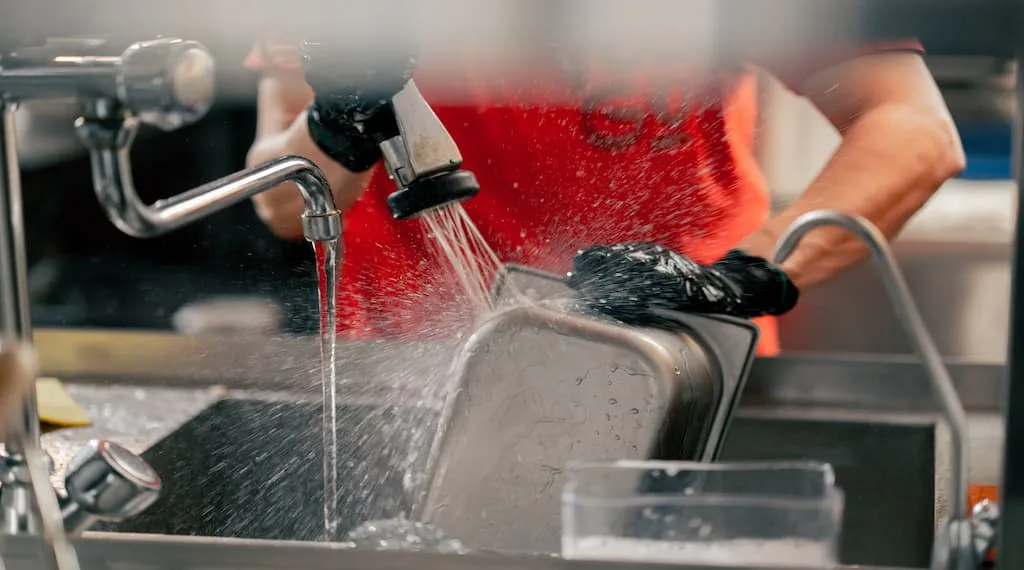
3. Provide Durability And Longevity
Eco-efficient kitchen equipment is furnished with advanced engineering principles, high-quality materials, and cutting-edge technologies to earn ENERGY STAR or other green certifications. They undergo a stringent testing process, rendering these appliances more durable and extending their lifespan. Their robust build and efficient mechanisms noenhance performance andinimize breakdown possibilities, reducing the need for frequent repairs and replacements.
Investing in durable, long-lasting machinery is a cost-effective and sustainable practice. Although buying eco-efficient kitchen equipment is more expensive upfront, the long-term cost-effectiveness becomes evident as businesses benefit from fewer expenses due to equipment purchases and replacements. Breakdowns and malfunctions cause downtime and service interruptions. Longer wait times are unaffordable in the fast-paced foodservice industry. Machines that cause you fewer problems increase productivity and operational efficiency, leading to a more profitable business.
Eco-efficient kitchen equipment also minimizes the environmental impact associated with manufacturing, transportation, and disposal. Longevity reduces your carbon footprint, diminishing the demand for raw materials and energy required in production. You can maximize sustainability and cost benefits by following some proper maintenance practices.
- Clean appliances regularly to prevent dirt or grease buildup that impairs performance.
- Schedule routine inspections to detect signs of wear, loose connections, or leaks that otherwise inflate into more costly issues.
- Train staff on correct usage and handling based on manufacturer guidelines to extend equipment lifespan.
- Plan timely major repairs to avoid more extensive damage.
- Calibrate and adjust equipment periodically to ensure operation at peak efficiency.
- Arrange professional servicing by qualified technicians to conduct comprehensive checks and upkeep.
4. Reduce Waste
Eco-efficient kitchen equipment also promotes sustainability in waste management. The US generates an estimated 106 million tons of food waste annually, with 18.34 million tons from restaurants, STATISTA reports say. The whole foodservice industry is responsible for 40% of the total food waste. The consequences of this waste are environmentally irreversible and far-reaching. Food waste decaying at landfills causes 11% of the world’s greenhouse gas emissions. According to the World Wildlife Fund (WWF), this is equal to the emissions of 37 million cars.
Therefore, effective waste management and composting practices are crucial. These systems focus on diverting organic waste from landfills and transforming it into valuable compost rich in essential plant nutrients. Composting in commercial kitchens involves collecting and subjecting food scraps, vegetable peels, and organic materials to controlled decomposition. Waste management systems complement composting efforts by sorting and managing various types of food and non-food waste generated in the kitchen.
Specific eco-efficient kitchen equipment technologies are emerging to help restaurants minimize food waste. The solutions below aim to prevent waste during inventory, storage, and serving or process the generated waste into more manageable items.
- Smart Inventory Management Systems: Using advanced inventory management systems that track real-time food inventory enables more informed purchasing, preparation, and storage decisions. Careful inventory management mitigates the risk of overstocking perishable items, accounting for 4 to 10 percent of food waste.
- Automated Temperature Monitoring Systems: Ensuring food is stored at proper temperatures prevents spoilage and maintains food quality. Smart labels and sensors track the freshness and quality of food items and immediately identify the spoiled ones. This again reduces the amount of food wasted before it reaches customers’ plates.
- Precision-Cooking Equipment: High-tech cooking equipment such as sous-vide machines, induction cooktops, and temperature probes prevents food from overcooking or burning.
- Portion Control Systems: Leveraging technology to precisely measure and regulate the amounts of ingredients used in each recipe lowers food waste because, according to the Natural Resources Defense Council, 17% of meals go uneaten by customers.
- Food Waste Tracking Apps: Commercial kitchens can make data-driven decisions by monitoring and analyzing their food waste generation through apps and software.
- Waste Pulpers: Pulpers are smart waste reduction solutions designed to process organic food and break it into smaller particles easily flushed away through plumbing systems or collected for further treatment. They achieve up to 85% waste reduction by grinding wasted food into a slurry or pulp.
- Food Recovery Systems: Collaborating with food recovery organizations and using technologies, foodservice operators can divert surplus edible food from landfills to those in need or for other productive uses.
Integrating these eco-efficient kitchen equipment and technologies provides environmental and economic benefits. It prevents greenhouse gas emissions associated with solid waste in landfills. The restaurant industry spends around 162 billion dollars on handling food waste, the Bureau of Labor Statistics states. Eco-efficient equipment and systems aim to reduce this heavy burden.
- Organic waste in landfills produces methane, a powerful greenhouse gas. Composting efforts prevent food waste from ending in landfills and causing methane emissions.
- Compost created from kitchen waste enhances soil fertility, minimizing the need for synthetic fertilizers.
- Effective waste management decreases disposal costs and expenditures on purchasing new ingredients.
- AdSustainable waste reduction solutions enhance the business’s reputation, attracting eco-conscious customers.
- Food waste recycling and recovery efforts contribute to a circular economy, transforming waste into higher-value products like food ingredients, animal feed, or bioplastics.
Eco-Efficient Restaurant Equipment Technology For Sustainable Operations
Eco-efficient kitchen equipment is getting smarter with the blend of innovation and sustainability. Incorporating smart technologies into kitchen operations is revolutionizing the foodservice market by giving operators unprecedented control and monitoring capabilities over energy and water usage. From energy-efficient ovens and intelligent refrigerators to water-saving dishwashers, smart appliances track and optimize power and water consumption by:
- Utilizing sensor technology to monitor processes and adjust settings automatically based on specific parameters predetermined by operators.
- Providing valuable insights into usage patterns and potential inefficiencies by providing real-time consumption data.
- Making quick adjustments to settings, troubleshooting, and maintenance scheduling by remotely controlling equipment through a smartphone or tablet.
- Collecting data on equipment performance and alerting users to potential maintenance issues.
- Minimizing water waste and ensuring continuous compliance with water conservation regulations.
- Allowing centralized control and optimization by integrating appliances with building management systems.
- Informing decision-making about equipment selection, kitchen design, and operational practices.
- Generating comprehensive sustainability reports.
Smarter than these smart systems is the integration of the Internet of Things (IoT) and Artificial Intelligence (AI) into eco-efficient kitchen equipment. These innovations convert traditional kitchen tools into smart, interconnected devices that learn, adapt, and improve overall efficiency. IoT facilitates communication among different appliances, enabling ongoing data collection and exchange, while AI helps use this data to optimize operations for maximum performance. IoT and AI integrations load a financial burden, but fortunately, there are financial incentives and support to relieve this burden.
Financial Incentives and Support for Sustainable Equipment Adoption
Investing in eco-efficient kitchen equipment and embracing sustainable practices pose initial costs for businesses, but the good news is that various states, governments, and organizations appreciate environmentally responsible initiatives. For example, ENERGY STAR certification is one of the most widely recognized programs in the U.S. Equipment that meets some strict energy efficiency guidelines is eligible for instant discounts. Visit Chef’s Deal instant rebate page to explore how much you can save on ENERGY STAR-rated appliances.
Many other financial incentives, such as tax credits, rebates, and grants, are available to boost foodservice facilities’ adoption of sustainable kitchen appliances. The following programs lessen the upfront financial burden on businesses, encouraging them to purchase and use eco-efficient kitchen equipment. The result is a win-win situation, with our planet and future as the biggest winner.
- Tax Credits: The U.S. federal government extends tax incentives that notably decrease tax liabilities to businesses investing in eco-efficient kitchen equipment. Numerous states and municipalities also offer specific tax incentives.
- Government Funding: Federal, state, and local governments allocate grants to businesses committed to sustainable practice, including the integration of eco-efficient kitchen equipment.
- Rebates: Utility companies frequently implement instant rebate programs for purchasing and installing ENERGY STAR-certified appliances. For instance, discounts range from $105 – $4,000 on ovens, $100 – $2,075 on fryers, and $100 – $3,600 on steam cookers.
- Manufacturer Discounts: Some equipment manufacturers provide price reductions on their green models.
- Non-Profit Funding: Non-profit organizations and foundations like the Green Restaurant Association (GRA) and WWF occasionally grant businesses funds to finance their sustainability initiatives.
- Low-Interest Financing: Financial institutions offer low-interest loans for energy-efficiency upgrades to make sustainable technologies more accessible to industry operators.
Earning financial support for transitioning to eco-efficient kitchen equipment and practices begins with thorough research and engagement with available programs. After you navigate the available options,
- Evaluate your eligibility, considering each program’s requirements based on business size, industry type, and equipment specifications.
- Check the qualifying product list and eligibility criteria carefully.
- Complete and submit the necessary application forms.
- Consult professionals who specialize in sustainable business practices and let them guide you through the whole process.
- Remain updated for new incentives and financial support.
By strategically following different financial support mechanisms, foodservice establishments offset their initial buying costs and contribute more to the sustainability of their businesses and the world.
Conclusion
Upgrading to eco-efficient kitchen equipment helps promote sustainability in foodservice by saving energy, conserving water, ensuring durability and longevity, and minimizing food waste. Incorporating smart technologies, IoT, and AI further enhances sustainability performance. They empower operators to control, monitor, and troubleshoot appliances remotely. Adopting green practices does not have to be very costly, thanks to funds, grants, rebates, and other financial incentives provided by governments and organizations. Investing in ecologically responsible practices is actually investing in the future of your business, the foodservice industry, and our planet.

